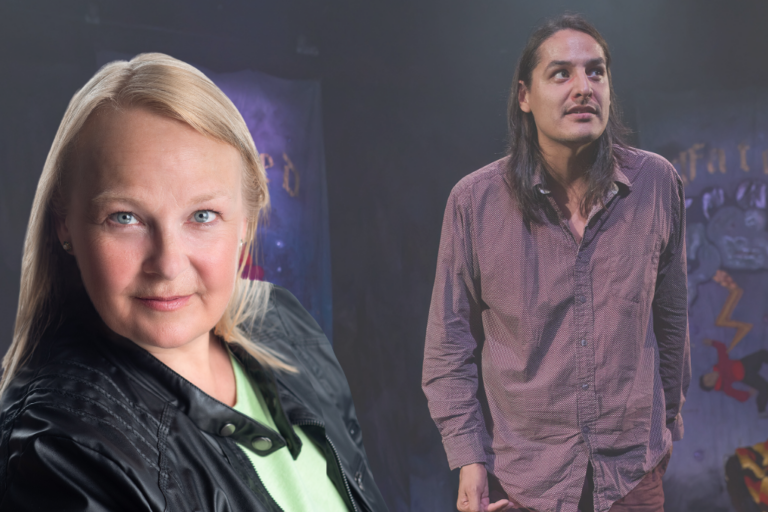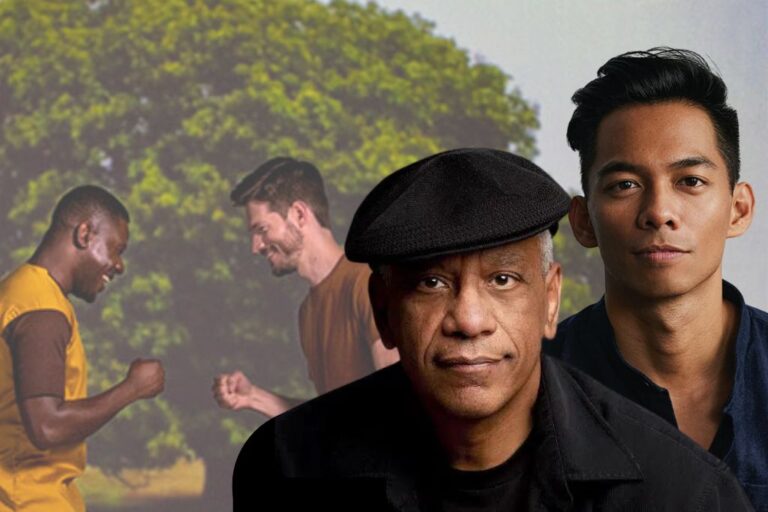“The Focus is on Phoebe”: Bringing NT Live’s Fleabag to the Big Screen
It’s the beginning of the end for Phoebe Waller-Bridge, the star and showrunner of BBC1’s smash-hit comedy Fleabag. On September 12, the actress begins her final run of performances as the titular comedy anti-heroine in a live one-woman show, written by Waller-Bridge herself and directed by Vicky Jones in London’s West End.
Are you one of many unlucky fans of British comedy who can’t see Fleabag onstage? Fortunately, Cineplex Events’ Stage Series has you covered. Partnering with National Theatre Live to offer a solution, Cineplex is bringing live stage performances to audiences across Canada so that they can take part in the character’s final moments as they happen in the UK. And for those who missed it the first time around, Fleabag is returning to participating Cineplex theatres beginning November 23.
Check your expectations at the door, however, if you think this will be a straightforward comedy special.
“It’s not stand up,” clarifies NT Live camera director Tony Grech Smith. “I’m not trying to shoot a movie. I’m trying to allow a viewer to enjoy a performance as much as if you sat there.”

Tony Grech Smith. Image courtesy National Theatre London.
As a BAFTA-nominated veteran of camera direction for both live television and stage, Grech Smith has been tasked with (re-)translating the magic of Fleabag from the West End to the big screen. He hopes you will understand the compelling show on its own terms—namely Waller-Bridge’s self-focused charisma.
“[Waller-Bridge] is on her own onstage (…) that isn’t stand up, it’s very much a performance. It would be really easy to treat it like I was shooting a stand up: cut to a close up, a wider shot, see the audience laughing… and that would be very wrong for this. I do have shots of the audience, but I never see their faces. I’m always on Phoebe.”
Can a broadcast stage performance of Fleabag truly capture the peculiar magic of Waller-Bridge’s messy protagonist? Grech Smith assures that his job is “very much to give the viewer in the cinema the truest sense of the performance,” as you would get if you were sat in the theatre. “One of the big differences with film and stage is that I’m not the practical director. The play exists, it’s already been put together creatively, and all those artistic decisions have been made.”
While the success of Fleabag across the pond is indebted to TV magic, this show marks a return to true form. Fleabag originally began as a tragicomic one-woman play, written and performed by Waller-Bridge at the 2013 Edinburgh Festival Fringe. The show earned Waller-Bridge a Fringe First Award and—eventually—internationally acclaim.

Phoebe Waller-Bridge in Fleabag. Photo by Joan Marcus.
From 2016 to 2019, Fleabag enjoyed a two-series run on the BBC1 network, where Waller-Bridge’s original vision grew to wrack up multiple Emmy and BAFTA award nominations, plus the enviable status of Twitter meme icon. The one-woman play was one-woman no more; a universe of colourful side characters—from her “c-word” fairy godmother (played by Olivia Coleman) to her overstressed sister Claire (Sian Clifford) and the lovelorn Hot Priest (Sherlock’s Andrew Scott)—blossomed around Waller-Bridge’s titular Fleabag.
Of course, none of these supporting fan favourites are expected to surface in the National Theatre Live offering. Grech Smith reiterates how Fleabag is “slightly different” from his previous works with recording multicamera plays with casts of actors. Once again, Fleabag finds herself alone—and for a long time.
“Phoebe enters the shot and then she doesn’t leave, and no one else comes on, and there is no set,” he describes. “The set is her on a stool with a very small stage that’s lit, and beyond that it’s black. So, your focus is very much on Phoebe.”
Yet for most viewers, the show’s creative bread and butter is its intimacy. Viewers develop a close relationship with Waller-Bridge’s heroine, as her fourth-wall breaking asides transform her unseen audience at home into her most intimate confidantes.
“I’m very sympathetic,” says Grech Smith on the art of putting the audience first. “In the sense that when I watch something, I do think about, ‘What do you want to see? What do I want to see now? Where do I want to look?’”
The consequences of insensitivity are high when it comes to cutting around a vivid and comedic performance. Not unlike Fleabag’s many social snafus, a little mishap can mean big trouble, as the slightest cut makes a big difference. There’s much to work around.
“If she were to stretch her arm out, or lean down, or stand up, I immediately have to cut a head to toe shot so that she doesn’t fall out of frame or she doesn’t look awkward,” says Grech Smith on the precise craft of containing Waller-Bridge’s stage persona for the screen. “It’s really subtle, but if you get that cut in the wrong place, it stands out. But if you get the right place, you can’t even notice it happen.”

Phoebe Waller-Bridge in Fleabag. Photo by Joan Marcus.
Having gone from play to television show to stage on the big screen, Fleabag is an example of the unexpected ways that technology, abetted by performance broadcasters like NT Live, are changing the way viewers think about modern fine arts.
That’s not to say there aren’t theatre purists, who believe there’s no place in theatre for a camera (let alone a camera broadcasting a live feed.) What does the camera director behind Fleabag think about this technological shift in theatre? Well, for Grech Smith, it remains all about the performance.
“So long as it remains true to the stage and doesn’t try to become something that the stage performance isn’t, then I don’t see trouble,” he weighs in on the debate. “I encourage more of it; I think it’s great that people are able to enjoy the theatre, who might not otherwise. It opens it up to a world of people who would not be otherwise fortunate enough to go or have the time to travel to [major theatre hubs like] London.”
Cineplex Events’ National Theatre Live broadcast will be aired on Sept. 12, just two days before Waller-Bridge’s (apparent) retirement of her character. At the time of writing, most of the cinema tickets to see Fleabag live in your nearest theatre have either sold or are rapidly selling out. As when it comes to editing comedic performances for stage and beyond, timing is everything.









Comments